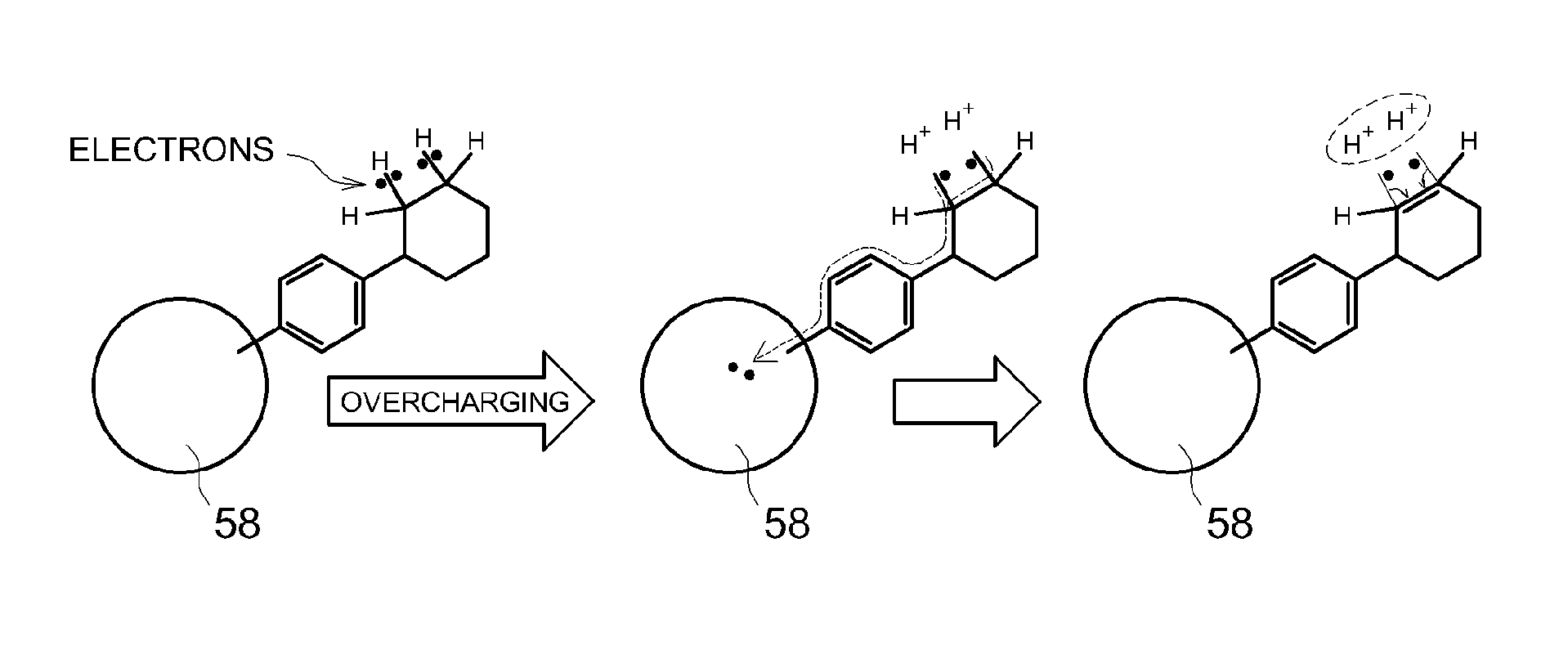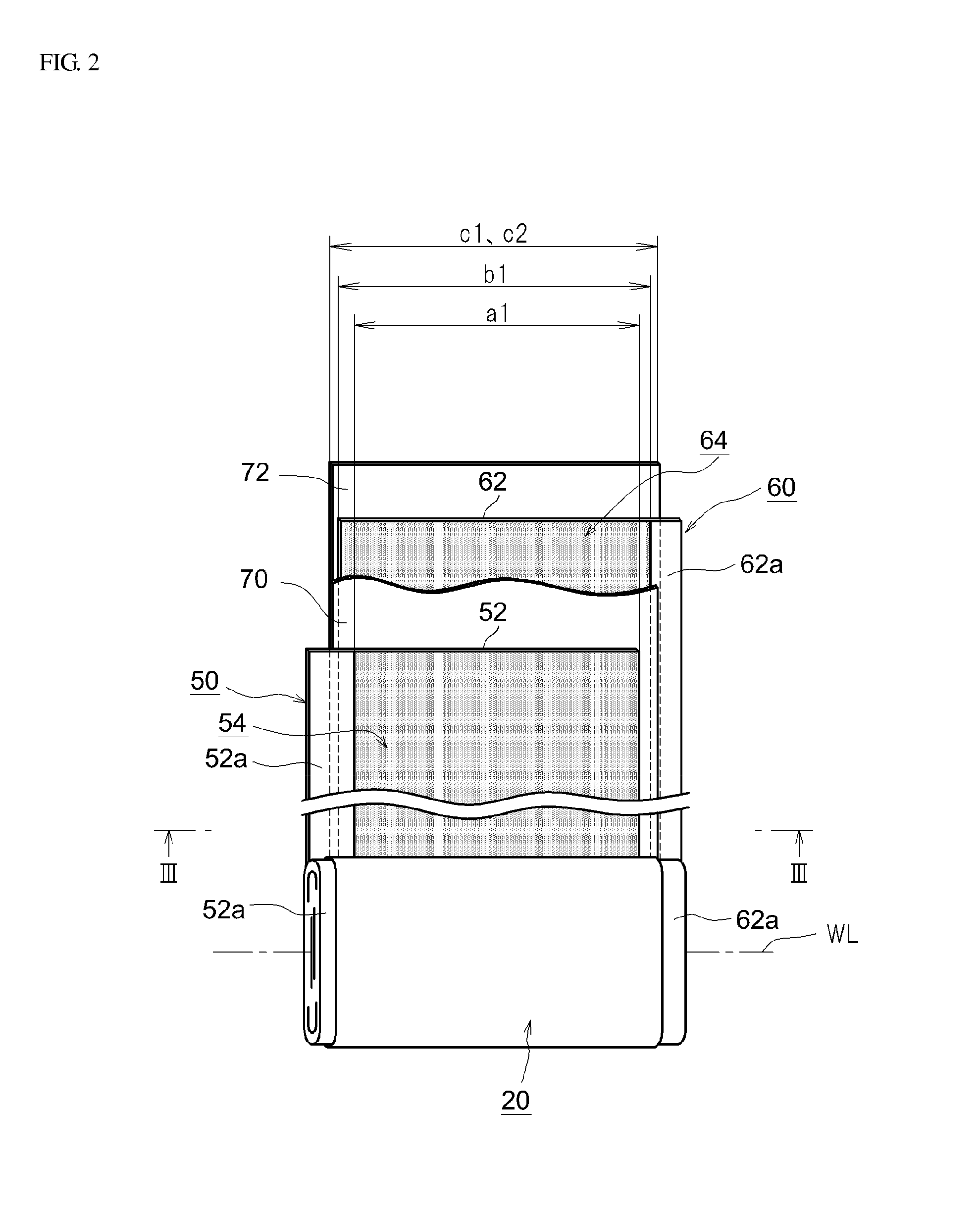Nonaqueous electrolyte secondary battery
- Summary
- Abstract
- Description
- Claims
- Application Information
AI Technical Summary
Benefits of technology
Problems solved by technology
Method used
Image
Examples
Example
Test Examples
[0043]In the test examples, evaluation cells (lithium ion secondary batteries) were constructed using a modified conductive material chemically modified by CHB followed by carrying out an overcharge test on the batteries and evaluating the discharge characteristics thereof. The following provides a detailed description of the method used.
[0044]The modified conductive material of the evaluation cell was fabricated in the manner described below. First, a conductive material in the form of acetylene black (DENKI KAGAKU KOGYO KABUSHIKI KAISHA.) was introduced into a reaction vessel equipped with a Liebig condenser and stirrer, and after deoxygenating and replacing the atmosphere inside the reaction vessel with argon, O-dichloromethane, tetrahydrofuran (THF, Aldrich Inc.) and p-cyclohexylaniline (Wako Pure Chemical Industries, Ltd.) were added and stirred at room temperature followed by adding isoamyl nitrite to the reaction product with a syringe and heating. After allowing...
PUM
 Login to View More
Login to View More Abstract
Description
Claims
Application Information
 Login to View More
Login to View More - R&D
- Intellectual Property
- Life Sciences
- Materials
- Tech Scout
- Unparalleled Data Quality
- Higher Quality Content
- 60% Fewer Hallucinations
Browse by: Latest US Patents, China's latest patents, Technical Efficacy Thesaurus, Application Domain, Technology Topic, Popular Technical Reports.
© 2025 PatSnap. All rights reserved.Legal|Privacy policy|Modern Slavery Act Transparency Statement|Sitemap|About US| Contact US: help@patsnap.com



